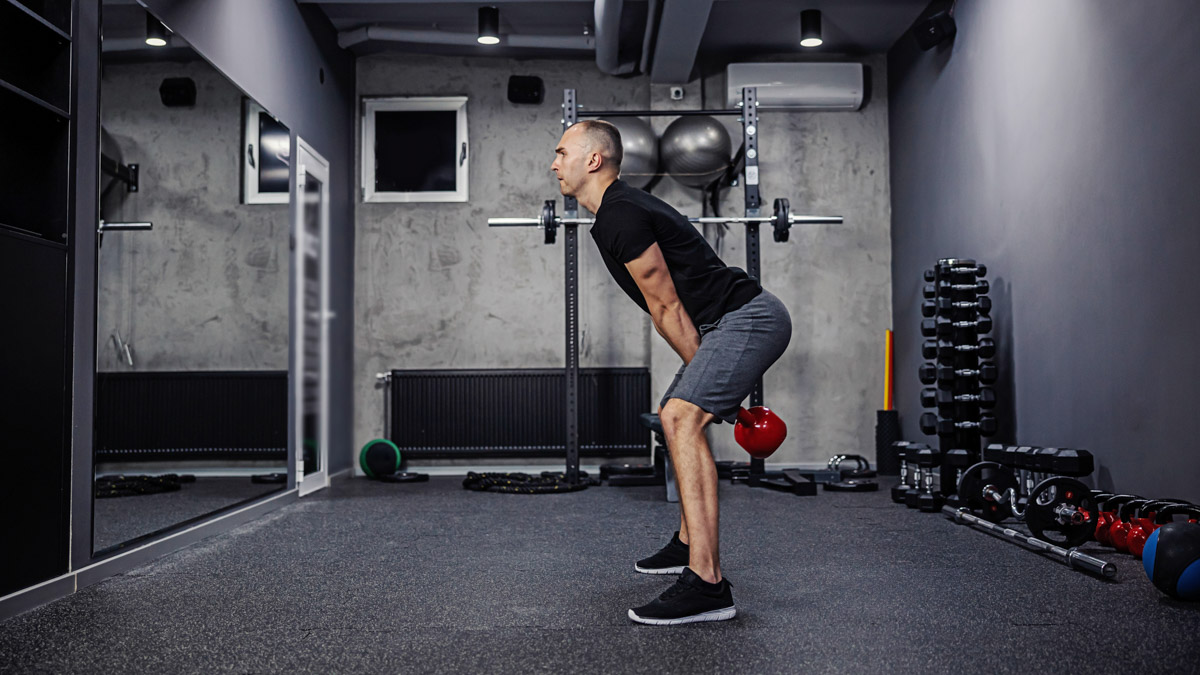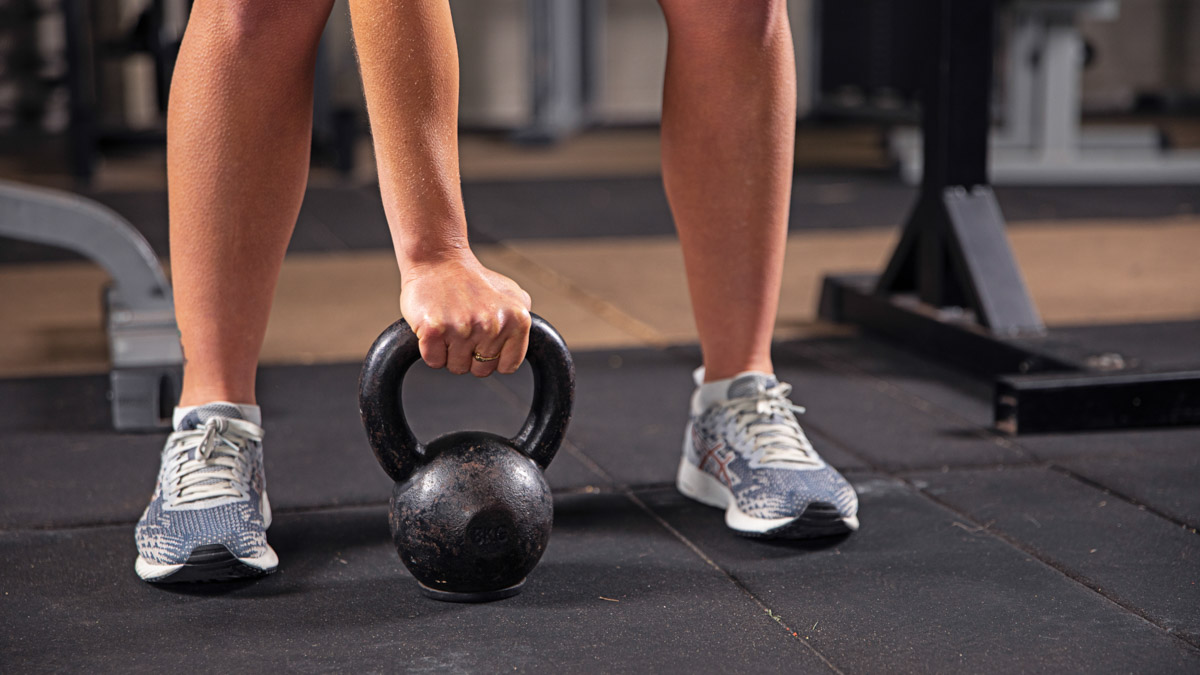In a typical training program, endurance athletes often focus on endurance above all else. And yet beyond a certain point, more volume is just more volume — you’re not going to get much more bang for your buck beyond a reasonable mileage threshold. So if you’re already at or close to that upper boundary, what can you do to keep progressing? One thing is to add power training to your regimen.
Cycling, running, and other endurance sports often focus on sustaining moderate power output for long periods of time. This is useful, but it’s also helpful to have a top gear that you can upshift to when you need it. This is where power training comes in.
Here are five effective power exercises for any and all endurance athletes that will level up your training.
Developing Physiological Power
First, you need to know what power really means. On your bike or rowing machine it can be measured in watts, but what is it from a physiological standpoint? Simply put, power is force expressed with speed. Developing power requires you to move your body quickly and forcefully. This can be done in just two to three short sessions a week, so you don’t need to worry about overloading your training schedule.
As the name suggests, power training should be done hard and fast. If you feel yourself slowing down while doing a power-based movement, then it’s time to stop the set, even if you’re not quite at your target number of reps. Cal State Fullerton muscle physiologist Dr. Andy Galpin suggests sticking with a low rep range (i.e., between one and six) for power movements. If you go beyond this, you’re starting to switch the emphasis to endurance. So rather than doing your usual three sets of 10 to 15 reps, consider doing more sets of fewer reps to build up your power capacity.
If you’re going to be heading out for a swim, run, or ride, I recommend doing your power training first, as doing your strength or endurance work first might have a detrimental effect on your power training.
1. Sprinting
Here’s a tricky one for endurance athletes to grasp. You’re meant to be going long rather than fast, right? In the sense of preparing for the demands of your event, yes. But doing speed work, perhaps quicker than you ever have before, does have some practical applications to your sport. For example, it will make it easier for you to respond to a breakaway in a race and to put in a finishing kick even when you’re fatigued. Sprinting also taxes your neuromuscular system and develops durability in supporting structures like ligaments, tendons, and bones. You don’t need to go full Usain Bolt here — just run quickly for a few minutes once or twice a week. Make sure you’ve warmed up well beforehand and that you sprint before doing any of the other exercises here or that your coach might suggest, as it requires your central nervous system to be fresh.
- Standing in a crouched position, run as fast as you can for 20 to 50 meters
- Make sure you keep your torso long, get your feet up off the ground quickly, and drive your knees high as you swing your arms
- Try to maintain 20% to 30% tension in your abs and keep your gaze fixed in front of you
- Rest for two to four minutes, and repeat three to six times
For some more in-depth exercises on how to improve your raw speed, check out this article: The Best Exercises to Improve Your Sprinting Speed.
2. Kettlebell Swing
If you were to only choose one power-developing exercise to do for the rest of your life, you couldn’t go wrong with the kettlebell swing. A more dynamic hinge than the deadlift, it requires you to generate power while also maintaining stability and, if you do a one-handed version, resisting rotation. In his book Simple & Sinister, StrongFirst founder Pavel Tsatsouline revealed that during lab testing, he achieved full muscle activation in both his lats and glutes using the kettlebell swing, demonstrating the power-creating potential of this movement. It’s a good idea to start with a little less weight than you think you can handle at first, as the goal is to move swiftly, not slowly. Then build up to heavier bells as you master keeping good technique while expressing power.
- Stand with your feet shoulder-width apart and a kettlebell on the ground slightly in front of you
- Grip the bell with both hands and hike it between your legs like a football player would, but don’t release your grip
- Reverse the motion in a hip hinge to propel the bell forward and up, squeezing your glutes and keeping your shoulder blades pinned back and down
- When the bell gets above waist height, let the momentum float it up until it’s level with your chest
- Maintaining your grip on the bell, let it start to fall back down, and use the momentum to repeat the “hike” phase
- Repeat five or six times
- Rest two to four minutes and repeat four to six times
This one can be sort of tricky to master. Using this step-by-step guide (with images and videos) can help you get the hang of it more quickly.
3. Depth Jump
Box jumps are very effective, but depth jumps — stepping down from a lower box or bench and then exploding quickly up off the ground — are a great progression. Before you start any kind of explosive jumping, first get in a few weeks of skipping rope or doing smaller jumps in place to build up your load tolerance. Also, be sure to focus on sticking the landing. Make sure your knees don’t collapse inward (aka, valgus knee) and that you tense your abs upon impact and stay tall rather than folding. This way, you’re much less likely to get hurt.
- Stand on a low bench or plyo box
- Step down off it, and land with both feet with a slight knee bend
- As soon as your feet touch the ground, leap powerfully into the air
- Use an arm swing to generate more upward motion
- Land on the balls of your feet, tap your heels to the floor
- Repeat these steps four to six times
- Rest two to four minutes and repeat four to six times
- You can also finish the movement by jumping up onto a higher box.
4. Medicine Ball Slam
The deadlift and kettlebell swing both involve opening up your hips in a powerful way. Another potent way to work the hinge pattern is to close the hips forcefully. And there’s no better way to do it than with a medicine/slam ball slam (yes, I know I used the word “slam” twice in this sentence). The beauty of this exercise is that it is very simple, involves you working on two archetypal movement patterns (overhead press to hip hinge), and is easy to do in a home gym with a readily available and pretty affordable tool.
- Stand with your feet shoulder-width apart with a medicine or slam ball between your feet
- Pick the ball up with one hand on either side of it
- Raise the ball overhead until both arms are fully extended
- Clench your abs as you hinge at the hips until your torso is almost parallel to the floor
- Use the momentum to slam the ball into the ground
- Pick the ball back up and repeat four to six times
- Rest two to four minutes and repeat four to six times
For more med ball action, check out 5 Best Medicine Ball Exercises for Training Strength and Power.
5. Broad Jump
A lot of plyometric exercises revolve around increasing your vertical jump. But NFL and NBA strength and conditioning coaches know that if you’re powerful, you can leap high as well as far. Enter the easiest exercise to both test and develop your jumping in another direction: the broad jump. It’s such a fundamental exercise that the creator of the Functional Movement Screen (FMS), Gray Cook, uses the broad jump as part of his Functional Capacity Screen (FCS).
- Stand with your feet shoulder-width apart
- Bend your knees as you sit back with your hips
- Swing both arms behind you and then forward as you leap as far as you can in front of you
- Land gently on the balls of your feet and gently tap your feet on the ground, making sure your feet remain straight and your torso remains well-organized (i.e., don’t collapse like an accordion)
- Rest for one to two minutes and repeat five to six times
Doing these exercises once a week will help you improve your peak power capacity. Performing them two or three times per week will compound these gains. Yes, I know you might call yourself “an endurance athlete”, but there’s nothing to say you can’t become a stronger and more powerful one.
References
Crosen, M. (2022, August 1). The Best Exercises to Improve Your Sprinting Speed. Retrieved from https://www.trainheroic.com/blog/exercises-to-improve-sprinting-speed/
Cook, G. Introduction to the Fundamental Capacity Screen. Retrieved from https://www.functionalmovement.com/Articles/883/introduction_to_the_fundamental_capacity_screen
Galphin, A. (2010, September 2). Power Training, How Heavy? : 25 Min Phys? Retrieved from https://www.youtube.com/watch?v=A7hI7f5t0Zs
McCormick, J. (2022, September 21). Master the Kettlebell Swing: A Step-By-Step Guide. Retrieved from https://www.trainheroic.com/blog/master-the-kettlebell-swing/
McCormick, J. (2023, March 22). 5 Best Medicine Ball Exercises for Training Strength and Power. Retrieved from https://www.trainheroic.com/blog/5-medicine-ball-exercises/
Ohlsen, N. (2024, April 23). Depth Jump. Retrieved from https://www.youtube.com/watch?v=txYJUlPvVU0
Tsatsouline, P. (2019, September 30). Kettlebell Simple & Sinister: Revised and Updated (2nd Edition). Retrieved from https://www.amazon.com/Kettlebell-Simple-Sinister-Revised-Updated/dp/0989892433








